How to turn off central heating in an apartment: problems
The topic of this material is the order of disconnection from the central heating in a city apartment. We will consider both the legal side of the problem and its technical aspects: the choice of the type of heating boiler, pipes and heating devices. So let's get started.

Goals
Before embarking on a large-scale project, it is necessary to clearly understand whether the game is worth the candle. So, why do you need to turn off central heating, if it regularly provides you with heat during the whole heating season?
There are two reasons.
- When central heating works, the start and end dates of the heating season are set regardless of your desire.. Unexpected frosts or, conversely, the winter thaw make the temperature in the apartment far from comfortable.
- The second argument in favor of disconnection is the price of heating per square meter, which in the case of central heating is at least twice as high.
On the last point it is worth stopping separately.
It is probably worth explaining to the reader why this difference exists regardless of the region and current energy prices.
- Central heating should provide a comfortable minimum temperature in all without exception apartments in the house. Meanwhile, the degree of insulation and the size of heating devices in them is somewhat different, which implies some redundancy in heat consumption: after all, you have to navigate by the worst readings. On the other hand, any modern household heating boiler is controlled by a thermostat and gives the apartment just as much heat as it needs.
- The consumer of DH services pays not only the heat supplied to his apartment, but also all the losses during transportation. Stripped thermal insulation of a heating main or a cold basement is hitting your pocket, whether you like it or not.

- Not only that: in the case of autonomous heating, you only pay for the gas or electricity actually consumed, then connecting to the DH system places a burden on you in the form of maintaining a developed and complex bureaucratic apparatus. Think for yourself, due to which there is guidance for heating networks and CHP, accounting organizations, engineers, craftsmen and a locksmith.
- Finally, in the case of the CO, you have to pay for the current and overhaul of the systems: the planned replacement of risers, valves, repairs of elevators, etc.
The Road to Calvary
Of course, disconnecting the apartment from the central heating will not cause delight among local management organizations.
Counter Arguments
Why will you create obstacles? No, you should not be in a hurry to blame for all sins the inertness of officials or their greed.
There are quite objective reasons for this.
- If one or more apartments switch to independent heating, this will mean a reduction in financial receipts. Including in the part that goes to the notorious repairs of equipment. Meanwhile, risers and gate valves will not be less; increased costs will be a burden on other tenants.
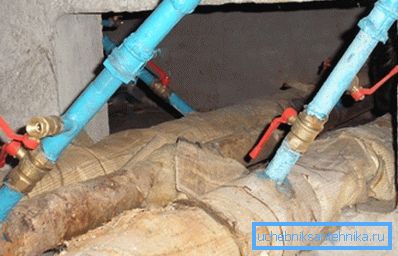
- Revenues to the budget of heating networks, heat and power plants, city authorities and federal services will also decrease. Yes, some of the funds that you pay for the heat come in taxes to the city budget and go to pay pensions, social programs and the education of your children.
In addition to financial, there are a number of purely technical problems.
- When the apartment is located on the first or one of the central floors, a coordinated or unauthorized disconnection from the central heating can be done in only one way: the heaters are cut off from the risers. The risers themselves remain in the apartment, while no organization will be able to control the unauthorized selection of heat through illegal tie-ins.
However: on the top floor, in houses of lower bottling, the problem is solved by looping up the double risers to the floor below.
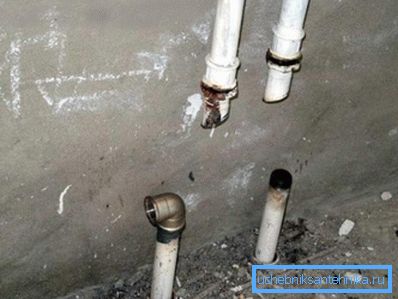
- Unlike central heating, where the temperature variation between apartments is minimal, autonomous will make this variation much more significant. Someone wants to save on heat, and to someone, on the contrary, tropical heat will seem more attractive.
This picture will have several obvious effects:
- Unheated or weakly heated apartments will be heated due to the flow of heat through the floors and partitions. In fact, tenants who maintain higher temperatures will pay for heat on the premises of their neighbors.
- The range of temperatures will cause deformation and destruction of plaster and capital structures. In unheated apartments, they may even begin to freeze through the walls, which will lead to the appearance of drips on the ceilings of the lower apartments.
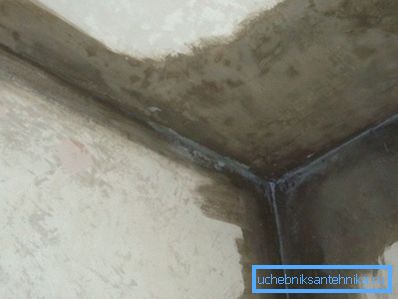
- Heating that is turned off in part of the apartments may lead to defrosting of water mains in them. As a result, the entire stand at the time of the search owners will sit without water.
Punitive measures in the case of unauthorized transition to autonomous heating - a substantial fine and restoration of the heating system at the expense of the tenant.
Collective transition to independent heating
The best thing you can achieve when communicating with representatives of housing and public utilities and local authorities is the proposal to switch to independent heating by the whole house or entrance.
Important: the main condition for this is the connection of all apartments to a common elevator node or several nodes.
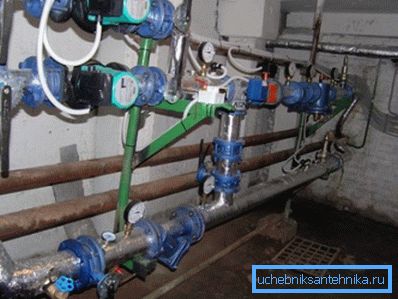
So, how to disconnect from the central heating entrance or house?
Here is a rough guide.
- A general meeting of apartment owners is held and recorded.
- The minutes of this meeting are submitted along with the application to the commission for approval, which is created by local executive authorities or the local government.
Note: with such a justification of the refusal, apartment owners may be asked to upgrade the highways at their own expense.
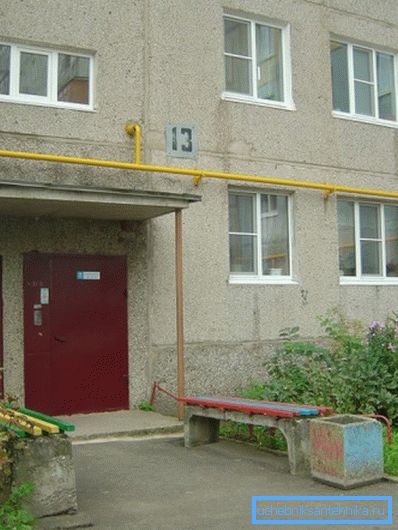
- With a positive decision, the commission issues a list of organizations from which it is required to issue technical specifications for the drafting of the project.
- On the basis of technical conditions, a working project is drawn up by a licensed project organization, which is endorsed by each of the organizations concerned. Typically, their list looks like this:
- Heating network.
- Local gas organization.
- Representatives of utilities.
- Department of architecture.
- Energy organization of the settlement.
Loophole
Despite all the obstacles, the question of how to disconnect from the central heating by a single apartment is still not devoid of meaning. In the current legislation there is one loophole, which has already been tested and confirmed by the existing judicial practice.
Clause number 15 of article 14 in the heat supply law of the Russian Federation contains the following wording: It is prohibited to switch to individual heating using heat energy sources, the list of which is determined by the connection rules, except in cases specified by the heat supply scheme.
In addition, paragraph 44 of the decree number 307 of April 6, 2012 contains a list of requirements for permitted heating boilers:
| Parameter | Value |
| Burner | Closed, with the selection of air from the street |
| Security | Protection against overheating of the coolant, pump shutdown, gas leakage and combustion products |
| Contour parameters | Heat carrier temperature - not higher than 95 ° C, pressure - not higher than 1 MPa |
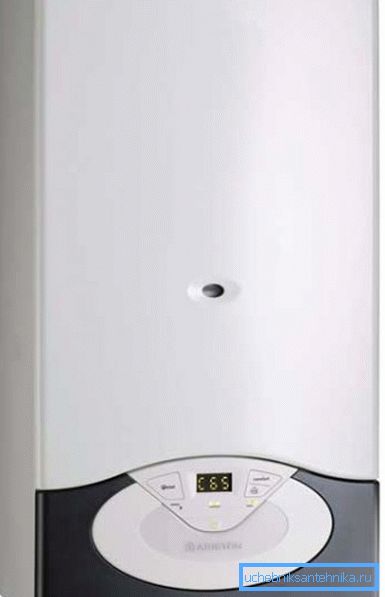
Thus, you only need to prove that your device is on the allowed list. If this succeeds (and it’s not a problem to choose a boiler with the appropriate characteristics with the current abundance of choice), any court will deny that it will be illegal to switch to autonomous heating with reference to the law on heat supply.
What to do after the court decision is in your hands?
You need to provide to the coordinating body:
- Technical passport of the apartment.
- Written consent of all family members to the transition to independent heating. Absent relatives, registered in your area, must also endorse it.
- Consent of the department of architecture of the city. For this, it is necessary that your house is not an architectural monument.
- Documents proving ownership.
- Project reorganization of communications.
- Statement.
Actually, all the necessary information about the documentation of the outage can be found in the Housing Code of the Russian Federation (paragraphs 25.26).
Important point: the coaxial air intake cannot be led out through the frontal facade of the house, which leads to the so-called red line.
After all permits are obtained, you pay for the work of representatives of the local organization of housing and public utilities, who dismantle the heating appliances in your apartment, jam their connections and draw up an act of the work done.
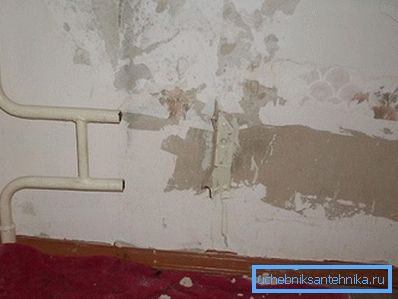
We are ours, we will build a new world
So, how to turn off central heating - we figured it out. All the old heating equipment removed from the apartment. Time to choose what will replace it.
To begin with, we will determine the heating parameters. They will be quite standard for an autonomous system:
| Parameter | Value |
| Maximum temperature of the heat carrier | 70С |
| Maximum working pressure | 2.5 kgf / cm2 |
Materials
Hence the choice of basic materials:
- As radiators it is best to use aluminum radiators. They combine a reasonable cost (from 300 rubles per section) with excellent heat dissipation and a presentable appearance. The strength of aluminum for an autonomous circuit is not that sufficient - obviously redundant.
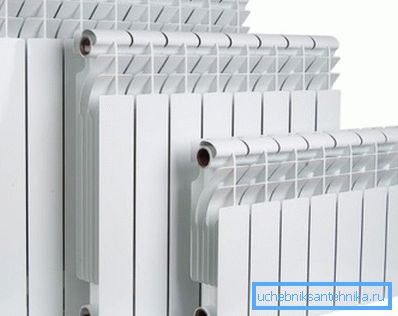
- The modest parameters of the coolant allow the use of polymer and metal-polymer pipes without restrictions. As a rule, reinforced polypropylene, cross-linked polyethylene and metal-plastic with press fittings are used.
An important point: when installing the system with your own hands, the easiest way is to use metal-plastic with compression fittings. This is also possible; however, they require compulsory pipe calibration before assembly. Otherwise, the pipe shifts the annular seal and compresses the bare fitting, giving further leaks at the connection.
Boiler
Which boiler to choose? Condensation, with storage boiler for hot water.
The condensation scheme makes the device more economical and allows the use of heated floors in the circuit with a return temperature not higher than 40 ° C; cumulative boiler compared with the flow provides greater stability of the outlet temperature.

Fittings
What valves should complete the circuit?
- On each radiator for shut-off and independent adjustment, a ball valve is placed at the inlet and a choke or thermal head at the outlet.
- In the upper traffic jams radiators installed Mayevsky's taps.
- To fill the circuit, a valve with a cold-water supply point is provided; for discharge, a drain to the sewer system is provided.
The security group (pressure gauge, air vent and safety valve) is in most modern gas boilers. In the absence of an expansion tank in the boiler, it is mounted at any point in the circuit. The volume of the tank is taken equal to 10% of the amount of coolant in the system.

Conclusion
We hope that we managed to give answers to all possible questions of the reader on the transition to independent heating. The attached video, as always, contains additional information. Successes!